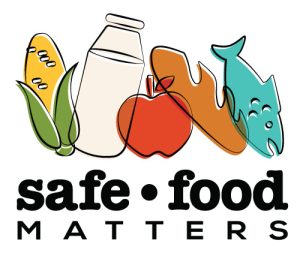For those concerned about pesticides in our foods, the link between harvesting practices and staggering high levels of glyphosate in common “healthy” cereals and legumes may come as a shock. Glyphosate, the active chemical in Roundup® and other pesticides, is considered to be “probably carcinogenic to humans”[i], a cause of non-hodgkins lymphoma, toxic to aquatic life,[ii] and a cause of milkweed decline.[iii]
High levels of glyphosate are present in many common foods, but so high in cereals and legumes that Canada’sf or importing countries’ legal limits are exceeded, as revealed by data from the Canadian Food Inspection Agency (CFIA) and other data[iv]. The CFIA data[v] revealed violations of maximum residue limits in chickpea and wheat bran samples. There were also violations for kidney bean, rye grain and products, bean flour, chickpea products and flour, and millet. Glyphosate was detected in 36.6% of grain products, 47.4% of bean/pea/lentil products, and 31.7% and 30.7% of infant cereal and food, respectively.[vi]
It appears these high levels result from a farming technique called “desiccation” or “drying down”, intended for crops that ripen unevenly or contain green material. The chemical is sprayed right on to the crops, while they are still growing in the field, in order to deliberately kill them at a targeted time and allow for a planned harvest. Glyphosate, a “systemic” chemical, gets rights into the circulation system of the plant and moves to the points of sugar delivery. These points are called “sinks”; they are typically roots, young shoots and developing seeds. For cereals and legumes, the “sinks” are the developing seeds, which is what we eat.
There is no way to know what specific crops have been desiccated with glyphosate, because farming techniques are not monitored.[vii] There is also no way to know when the crops are sprayed. Timing is important: authorities say that if spraying occurs when there is more than 30% moisture content in the crop, then more glyphosate ends up in the seed sink. The practise guideline for determining the “stage of growth” is a “thumbnail test” and “visual colour test”[viii]. These guidelines are problematic, especially with indeterminate crops like beans that don’t stop producing seeds, because their seeds don’t mature all at the same time.
Safe Food Matters recently objected to the 2017 re-registration of glyphosate in Canada on the basis of this desiccation issue, among other things. Glyphosate has been in commercial use in Canada since 1994, and was re-registered in 2017, following a re-evaluation process that is required by law[ix] every 15 years. The most recent process started in 2009 and took 8 years. A summary of the arguments set out in the Notice of Objection can be viewed here.
____________________________________________________________________________________________

